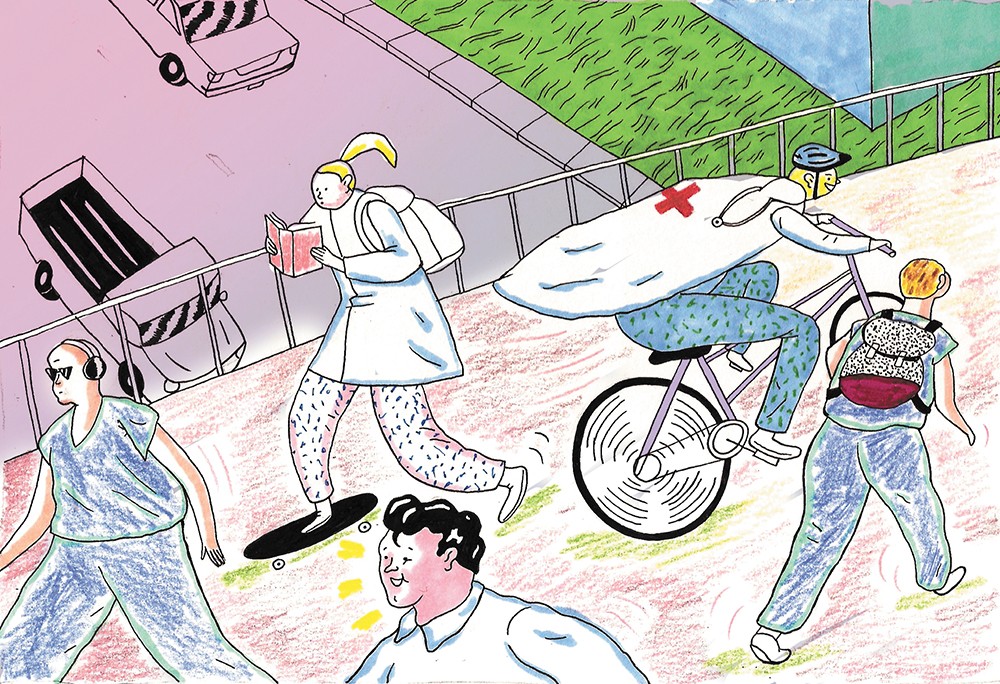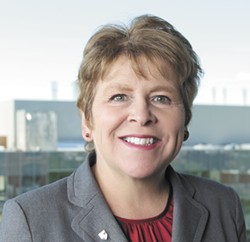While the Ironman was on the minds of many local sports enthusiasts this summer, Washington State University and Spokane were winning a triathlon of a different kind. The first two legs were permission and funds from the state legislature for WSU to pursue accreditation for a second publicly funded medical school, as is common in most states. The third leg was funding for the University District Gateway Bridge connecting the campus to East Sprague and the lower South Hill.
With regard to the medical school, our focus now is on hiring the inaugural dean. A search committee of medical, community and business leaders has been formed and we plan to announce a selection this fall. We are also signing affiliation agreements with health care providers who will teach third- and fourth-year medical students here in Spokane and in Vancouver, Everett and the Tri-Cities, where WSU's other urban campuses are located.
These partnerships will not only allow our medical students the long-term clinical rotations unique to the kind of community-based medical education that WSU Spokane will be providing, they will also serve as a strong reminder that our goal is to recruit medical students from underserved communities so that they will return there to practice.
The partnerships are also important to the success of our application to the national Liaison Committee on Medical Education. We will submit the application this winter with the goal of gaining preliminary accreditation and welcoming our charter class of WSU medical students to Spokane in August of 2017.
With so much work to do, it's easy to take for granted the sacrifices that have gone into getting a medical school in Spokane. People like the late President Elson S. Floyd and the late community leader Tom Fritz spent many hours explaining the need for a medical school and the value that having one here would bring to Spokane. Their passion was so strong that their families have chosen the new medical school as the recipient of their memorial funds.
As we honor these leaders and celebrate the accomplishments of the past year, we are also thanking and acknowledging the many people who have worked so hard and for so long to realize the vision of Spokane finally pursuing its own medical school.
And we are doing it at a time when we will continue to host the University of Washington WWAMI medical education program on our campus.
As both the WSU and UW medical education programs advance, Washington state has the potential to no longer be at the bottom of the country in terms of medical students per capita.
In fact, once the fall term begins, more than 3,500 WSU, Eastern Washington University and UW students will spend their days and/or evenings on our campus. It is these students who have much to gain from the bike/pedestrian bridge funding referenced earlier. Though not yet final, it was included in the state transportation package.
Designed by WSU students more than a decade ago, the bridge will be positioned diagonally across Martin Luther King Jr. Way and the BNSF railroad. It will improve access to campus and to the medical district, where many of our students do clinical work and our faculty leads students in that work; make walking and biking to/from housing there easier; and, importantly, revitalize the underdeveloped East Sprague area.
While these legislative accomplishments are very much worth savoring, and we are very grateful to the legislators who worked so hard to support them, we know that much work lies ahead, and the race continues. ♦
Lisa J. Brown, who served more than 20 years in the Washington State Legislature, is the chancellor of WSU Spokane.

















